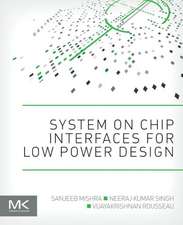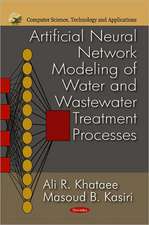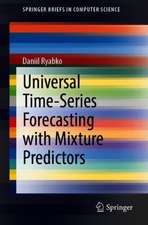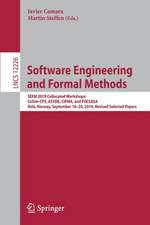Essential Computer Science: A Programmer’s Guide to Foundational Concepts
Autor Paul D. Crutcher, Neeraj Kumar Singh, Peter Tiegsen Limba Engleză Paperback – 12 iun 2021
According to code.org, there are 500,000 open programming positions available in the US— compared to an annual crop of just 50,000 graduating computer science majors. The US Department of Labor predicted that there will be almost a million and a half computer science jobs in the very near future, but only enough programmers to fill roughly one third of these jobs.
To bridge the gap, many people not formally trained in computer science are employed in programming jobs. Although they are able to start programming and coding quickly, it often takes them time to acquire the necessary understanding to gain the requisite skills to becomean efficient computer engineer or advanced developer.
What You Will Learn
- The fundamentals of how a computer works
- The basics of computer programming and programming paradigms
- How to write efficient programs
- How the hardware and software work together to provide a good user experience and enhance the usability of the system
- How computers can talk to each other
- How to ensure the security of the system
- The fundamentals of cloud offerings, implications/trade-offs, and deployment/adoption configurations
- The fundamentals of machine learning
Who This Book Is For
Computer programmers lacking a formal education in computer science, and anyone with a formal education in computer science, looking to develop a general understanding of computer science fundamentals
Preț: 259.04 lei
Preț vechi: 323.80 lei
-20% Nou
Puncte Express: 389
Preț estimativ în valută:
49.57€ • 51.56$ • 40.93£
49.57€ • 51.56$ • 40.93£
Carte disponibilă
Livrare economică 24 martie-07 aprilie
Preluare comenzi: 021 569.72.76
Specificații
ISBN-13: 9781484271063
ISBN-10: 1484271068
Pagini: 290
Ilustrații: XXIII, 290 p. 77 illus.
Dimensiuni: 155 x 235 mm
Greutate: 0.45 kg
Ediția:1st ed.
Editura: Apress
Colecția Apress
Locul publicării:Berkeley, CA, United States
ISBN-10: 1484271068
Pagini: 290
Ilustrații: XXIII, 290 p. 77 illus.
Dimensiuni: 155 x 235 mm
Greutate: 0.45 kg
Ediția:1st ed.
Editura: Apress
Colecția Apress
Locul publicării:Berkeley, CA, United States
Cuprins
Chapter 1: Fundamentals of a Computer System.- Chapter 2: Programming.- Chapter 3: Algorithm and Data Structure.- Chapter 4: Operating System.- Chapter 5: Computer Networks and Distributed Systems.- Chapter 6: Computer Security.- Chapter 7: Cloud Computing.- Chapter 8: Machine Learning.- Appendix A: Software Development Lifecycle.- Appendix B: Software Engineering Practices.- Appendix C: ACPI System States.- Appendix D: System Boot Flow.-
Notă biografică
Paul D. Crutcher is Senior Principal Engineer at Intel Corporation and manages the Platform Software Architecture team in the Client Computing Group. He has worked at Intel for more than 25 years and has also worked at two smaller software companies. Paul has a degree in computer science, with expertise spanning software development, architecture, integration, and validation based on systems engineering best practices in multiple areas. He holds several patents and has written multiple papers and presentations.
Neeraj Kumar Singh is a Principal Engineer at Intel with more than 15 years of system software and platform design experience. His areas of expertise are hardware software co-design, system/platform architecture, and system software design & development. Neeraj is the lead author of two other books: System on Chip Interfaces for Low Power Design and Industrial System Engineering for Drones: A Guide with Best Practices for Designing, in addition to many other papers and presentations.
Peter Tiegs is Principle Engineer at Intel with 20 years of software experience. Inside Intel he often consults on DevOps topics such as build automation and source code branching. Over the last decade Peter evangelized continuous integration and delivery as well as agile practices at Intel. He has written software at all levels of the stack from embedded C code to VUE.js. His programming language of choice is Python.
Neeraj Kumar Singh is a Principal Engineer at Intel with more than 15 years of system software and platform design experience. His areas of expertise are hardware software co-design, system/platform architecture, and system software design & development. Neeraj is the lead author of two other books: System on Chip Interfaces for Low Power Design and Industrial System Engineering for Drones: A Guide with Best Practices for Designing, in addition to many other papers and presentations.
Peter Tiegs is Principle Engineer at Intel with 20 years of software experience. Inside Intel he often consults on DevOps topics such as build automation and source code branching. Over the last decade Peter evangelized continuous integration and delivery as well as agile practices at Intel. He has written software at all levels of the stack from embedded C code to VUE.js. His programming language of choice is Python.
Textul de pe ultima copertă
Understand essential computer science concepts and skills. This book focuses on the foundational and fundamental concepts upon which expertise in specific areas can be developed, including computer architecture, programming language, algorithm and data structure, operating systems, computer networks, distributed systems, security, and more.
According to code.org, there are 500,000 open programming positions available in the US— compared to an annual crop of just 50,000 graduating computer science majors. The US Department of Labor predicted that there will be almost a million and a half computer science jobs in the very near future, but only enough programmers to fill roughly one third of these jobs.
To bridge the gap, many people not formally trained in computer science are employed in programming jobs. Although they are able to start programming and coding quickly, it often takes them time to acquire the necessary understanding to gain the requisite skills to become an efficient computer engineer or advanced developer.
You will learn:
To bridge the gap, many people not formally trained in computer science are employed in programming jobs. Although they are able to start programming and coding quickly, it often takes them time to acquire the necessary understanding to gain the requisite skills to become an efficient computer engineer or advanced developer.
You will learn:
- The fundamentals of how a computer works
- The basics of computer programming and programming paradigms
- How to write efficient programs
- How the hardware and software work together to provide a good user experience and enhance the usability of the system
- How computers can talk to each other
- How to ensure the security of the system
- The fundamentals of cloud offerings, implications/trade-offs, and deployment/adoption configurations
- The fundamentals of machine learning
Caracteristici
Teaches you fundamental concepts from computer hardware and architecture to machine learning and everything in between Helps you review the Software Development Life Cycle (SDLC): Planning, Analysis, Design, Implementation, Testing, Deploying, and Maintenance Covers tools and techniques for software engineering best practices



























